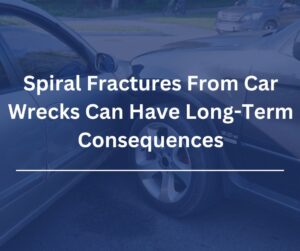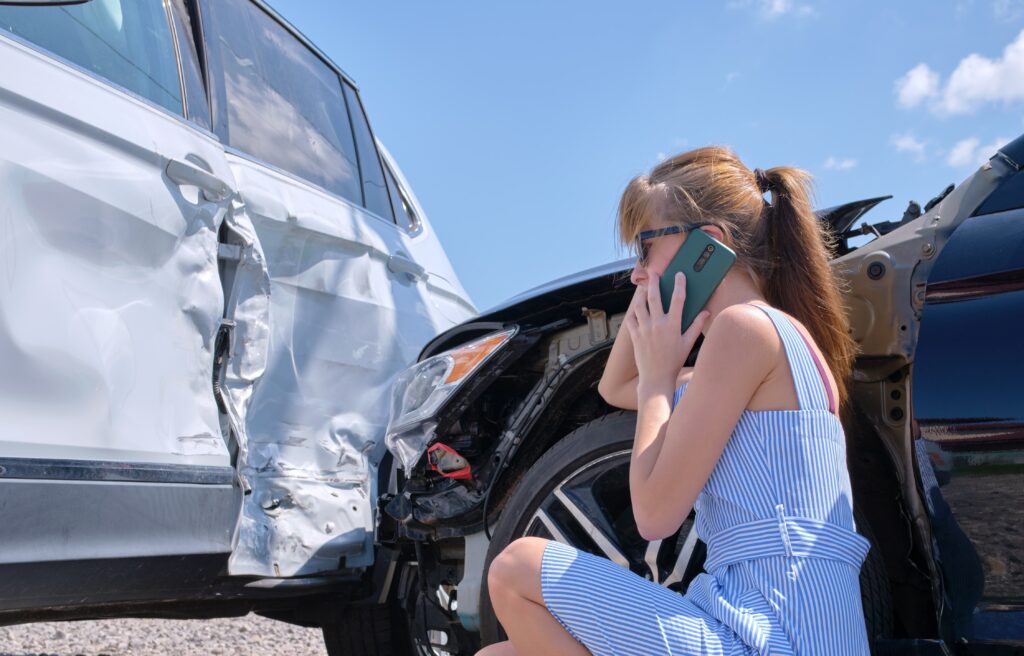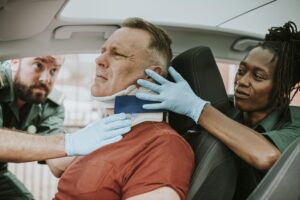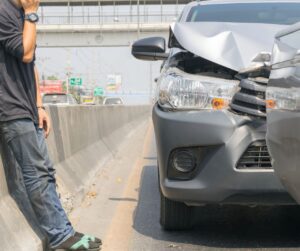
A sudden jolt. Shattered glass. The screech of metal against metal. In the seconds after a car crash, time feels frozen yet impossibly fast. In New York, this moment can be frightening and have lasting consequences. Now you have many questions, including the most pressing: what to do after a car accident. If you or someone you care about has just been through a crash, what you do next matters for your safety and to protect your rights.
Below, we walk you through eight steps to take after a car accident in New York so you can respond with confidence instead of uncertainty.
Motor Vehicle Accidents in New York
Motor vehicle fatalities in New York increased by 25.8% between 2019 and 2022, with more than 1,100 lives lost on state roadways, according to the Office of the New York State Comptroller, demonstrating how devastating incidents may be.
Knowing what to do following a car accident is essential. Your actions can significantly impact your physical health, financial recovery, and legal position. A clear plan detailing can turn a messy situation into one you can confidently handle.

Get to Safety and Check for Injuries
What to do immediately after an accident? Your first priority is safety. If your vehicle is still drivable, move it to a safe location, like the shoulder of the road, to reduce the risk of further collisions. If moving the car isn’t possible, turn on your hazard lights to warn other drivers.
Call 911 immediately if anyone is injured, no matter how minor the injury may seem. Internal injuries or concussions may not be obvious at first. Emergency responders can also help control the scene and begin documenting the incident.
Call the Police, Even for Minor Crashes
In New York, when you’re involved in a car crash, you are legally required to contact the police if there’s an injury, a death, or property damage exceeding $1,000. Not reporting could result in fines, suspension of your license, or criminal charges. When officers arrive:
- Provide clear, factual statements without speculating on who’s at fault, and
- Ask how to obtain a copy of the police accident report for insurance and potential legal claims.
Even for what seems like a minor fender bender, calling the police creates an official record that can help protect you later.
Gather Information and Evidence at the Scene
Beyond the official police report, thorough personal documentation of the accident scene is crucial. Be sure to collect the following vital information:
- Driver and vehicle information. Obtain names, phone numbers, addresses, license plate numbers, and insurance policy details from all involved drivers.
- Witness contact details. Collect the contact information from anyone who observed the accident.
- Photographic and video evidence. Take photos and videos of vehicle damage, skid marks, traffic signals, prevailing weather conditions, and visible injuries.
- Road and environmental factors. Note any construction zones, potholes, or other elements of the road environment that may have contributed to the crash.
Preserving this extensive evidence can bolster your position in any future disputes.
File a Crash Report
If the police didn’t file a report for you, New York law requires you to submit a Motorist Accident Report (MV-104) within 10 days if someone was injured or killed, or if property damage exceeded $1,000. Not filing this report could result in suspension of your license. This report is more than just a formality. It’s essential evidence for your insurance claim and any future legal steps.
Seek Medical Care Promptly
Even if you feel fine, adrenaline can hide pain and symptoms for hours or even days. Some injuries, like whiplash, concussions, or internal bleeding, might not show up right away. By seeing a doctor immediately, you:
- Protect your health and begin treatment sooner; and
- Establish a medical record connecting your injuries to the accident, which is crucial for insurance or legal claims.
Getting medical attention quickly can help avoid complications from hidden injuries and tie those injuries to the car accident.
Contact a New York Car Accident Attorney
While you can handle some crashes directly with insurance, others involve disputes about fault, significant injuries, or coverage issues. Instead of guessing what to do in a traffic accident, legal guidance can make a difference in these cases. An attorney can:
- Investigate the accident and preserve critical evidence;
- Identify all liable parties and potential sources of recovery; and
- Handle insurance negotiations, allowing you to focus on healing.
If your injuries meet New York’s “serious injury” threshold, such as fractures, significant disfigurement, or long-term disability, you may be entitled to pursue a personal injury lawsuit for damages beyond no-fault benefits. Meeting this threshold can significantly increase potential compensation since it allows you to recover from pain and suffering, not just medical bills.
Notify Your Insurance Company
New York is a no-fault state for car insurance, meaning your insurance typically covers your medical expenses and other losses up to policy limits, regardless of who caused the crash.
Report the accident to your insurer immediately, but avoid giving recorded statements until you know your rights. Insurance adjusters might try to reduce payouts, even to their own policyholders.
Keep Detailed Records
Accident-related costs can add up quickly. Keep a dedicated file with:
- Medical bills and treatment notes,
- Car repair estimates and receipts,
- Correspondence with insurance companies, and
- Documentation of missed work and lost income.
These records help with your insurance claim and strengthen any personal injury case you may pursue.
Every Step After a Car Crash Counts: Trust Greenspan & Greenspan Injury Lawyers
One moment of impact can change everything. One decisive phone call can change what comes next. For over 60 years, Greenspan & Greenspan Injury Lawyers has successfully turned challenging situations into victories for New Yorkers. Our team has extensive courtroom and negotiation experience, giving us a deep understanding of New York’s traffic laws, insurance regulations, and litigation processes.
We are dedicated to getting the best possible result for our clients in every case, whether through settlement talks or a trial. Protect your recovery and future by following our easy steps to take after a car accident. We stand ready to guide you with knowledge, compassion, and a commitment to results. Your next step could be the one that turns the tide. Let’s take it together.
Frequently Asked Questions
Do I Have to Call the Police After a Minor Accident in New York?
If there are injuries, death, or property damage over $1,000, you must call the police. Even for smaller accidents, reporting the accident to create an official record is wise.
How Long Do I Have to File a Lawsuit After a Car Crash in New York?
In most cases, you have three years from the date of the crash to file a personal injury lawsuit. Shorter deadlines apply if the claim is against a government entity.
What If the Other Driver Blames Me for the Accident?
Fault disputes are common after a car accident, especially in bad weather. Our team will review police reports, witness statements, and physical evidence to challenge inaccurate claims and protect your rights.
How Soon Should I Contact a Lawyer After a Snow or Ice Accident?
The sooner you seek help, the better it is for preserving relevant evidence, such as photos from the accident scene and surveillance footage, which can be essential in establishing your case.
Resources:
- New York State Department of Motor Vehicles, Motorist Accident Report (MV-104), link.
- Statute of Limitations. CPLR § 214 (2022), link.
- New York State Department of Motor Vehicles, New York State Driver’s Manual and Practice Test, If You Are in a Traffic Crash, link.
- New York State Department of Motor Vehicles, File a Motorist Crash Accident Report, link.






